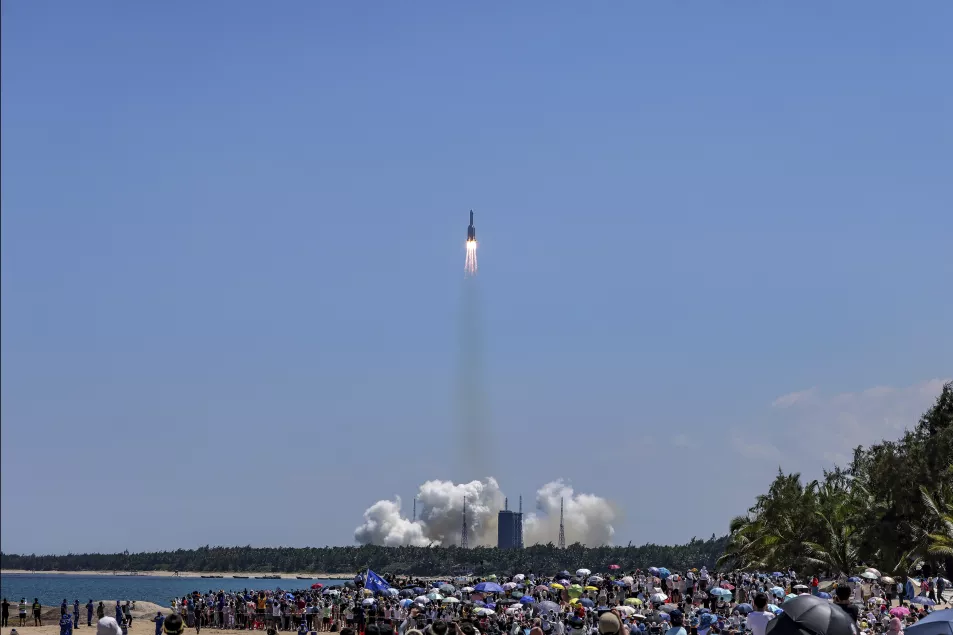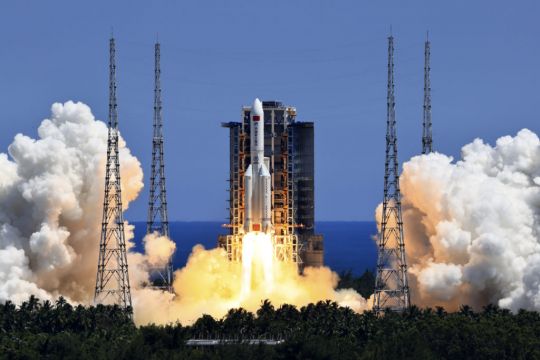China has added a laboratory to its permanent orbiting space station as it prepares to complete the structure in the coming months.
The Wentian lab module was launched from the Wenchang space base on the tropical island province of Hainan on Sunday, with a large crowd of amateur photographers and space enthusiasts watching.
After 13 hours of flight, it successfully docked with the Tiangong station’s main Tianhe living module at 3.13am on Monday (8.13pm on Sunday BST), according to the China Manned Space Agency.

The Wentian is designed for science and biology experiments, and the 23-tonne lab module is heavier than any other single-module spacecraft currently in space, according to the state-owned Global Times.
It will be followed by a second lab module, the Mengtian, due to be launched in October.
Three astronauts are currently living in the core module on a six-month mission and oversaw the Wentian’s arrival and docking procedures.
A Long March 5B-Y3 rocket, China’s most powerful, carried the module in the third such launch since the Chinese space station entered its construction phase.

It was preceded by the Tianzhou-class cargo spacecraft and the Shenzhou-14 crewed spacecraft.
China’s space programme is run by the ruling Communist Party’s military wing, the People’s Liberation Army, and it has largely proceeded with the Tiangong programme without other nations’ assistance.
The US excluded China from the International Space Station because of its military ties.
China’s space programme launched its first astronaut into orbit in 2003, making it only the third country to do so on its own after the former Soviet Union and the US.
It has landed robot rovers on the moon and placed one on Mars last year.
China has also returned lunar samples and officials have discussed a possible crewed mission to the moon.







